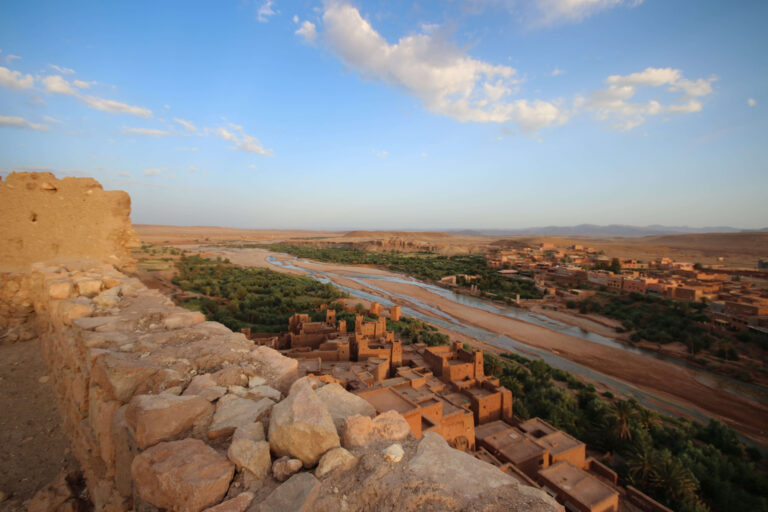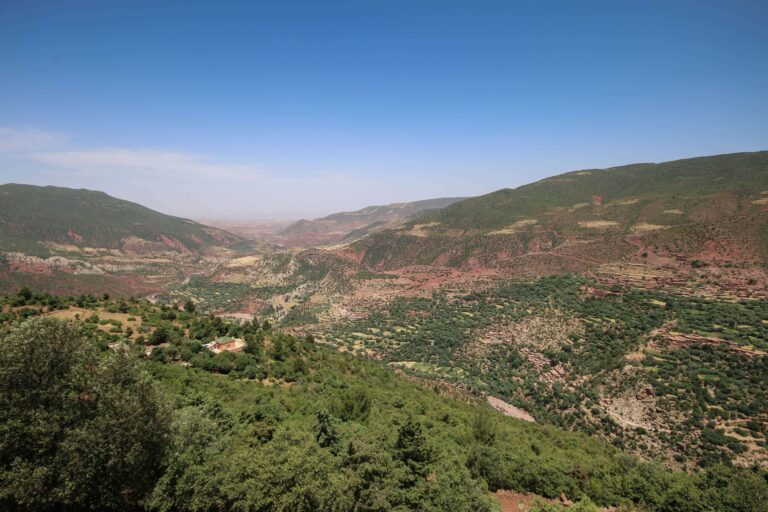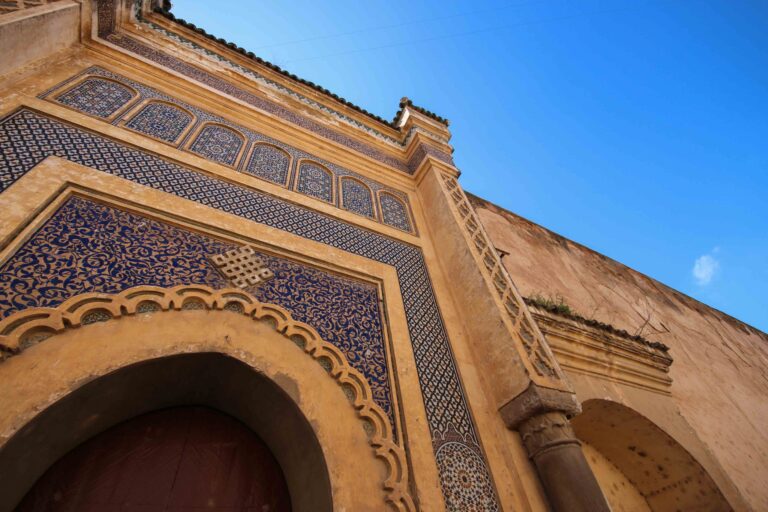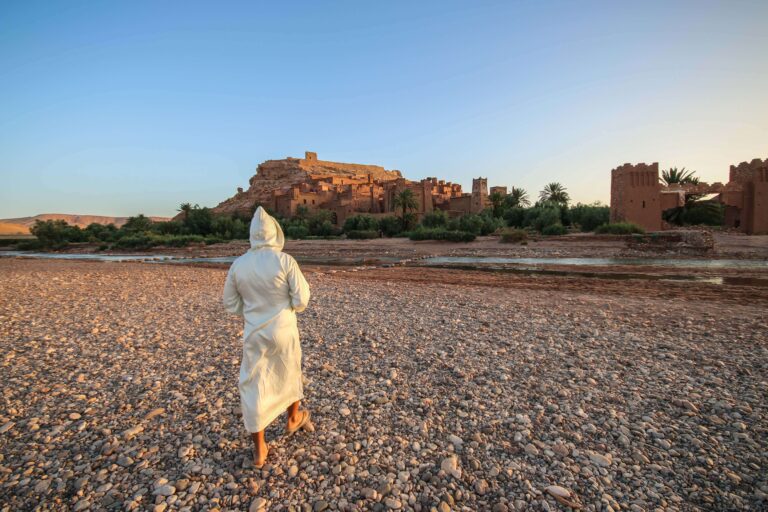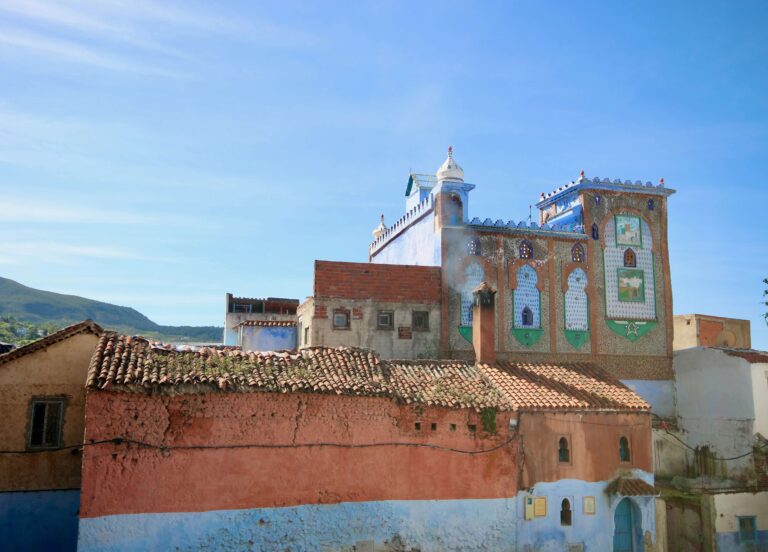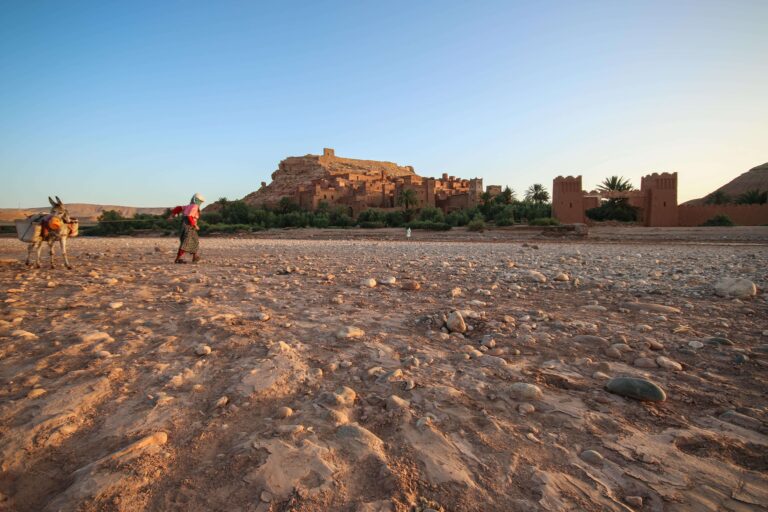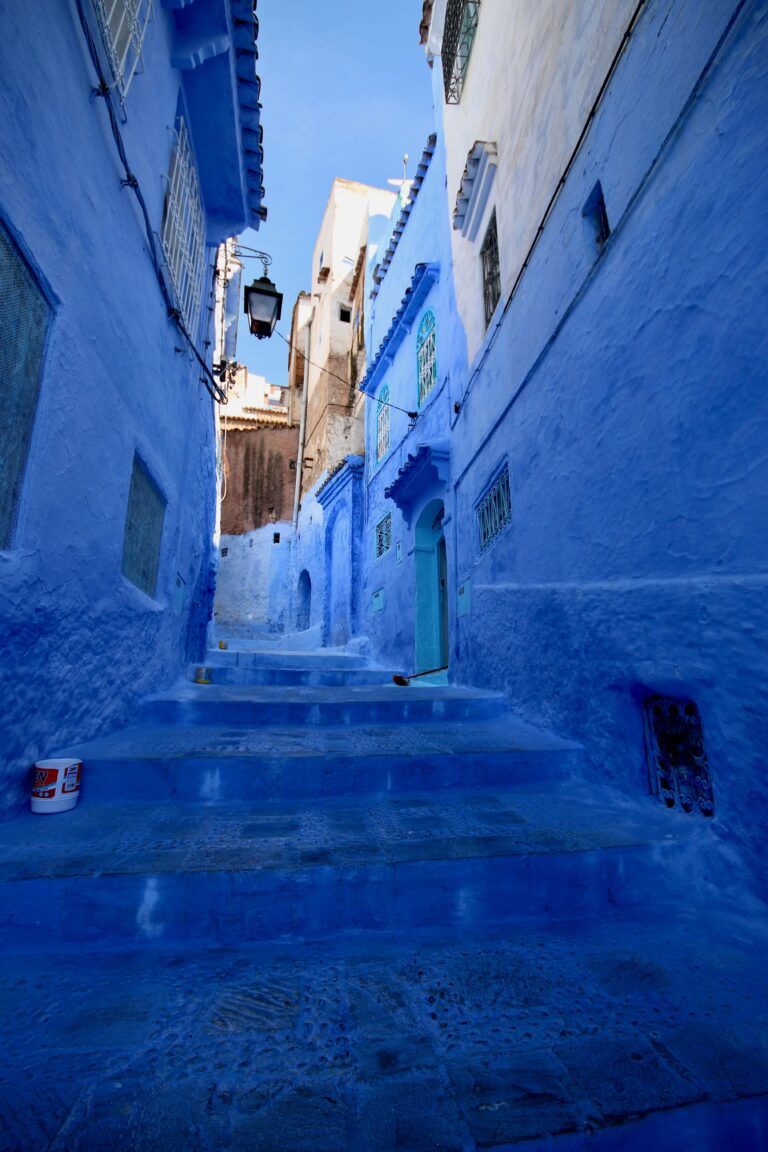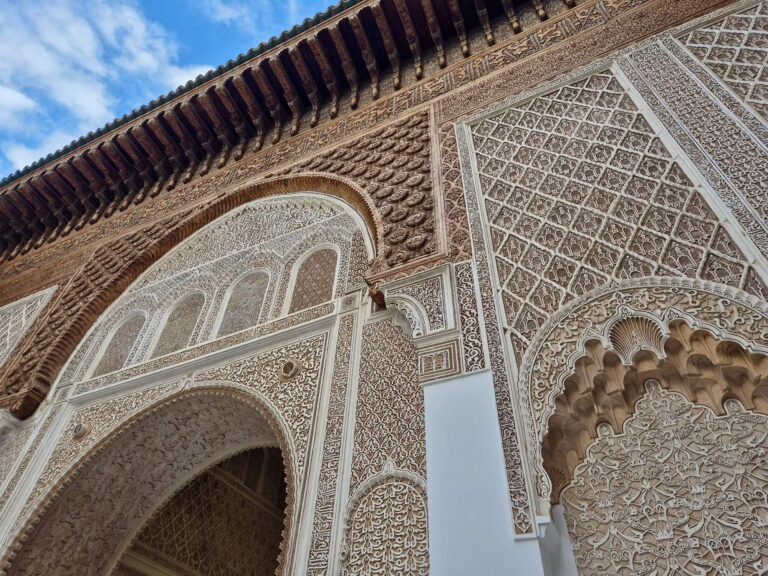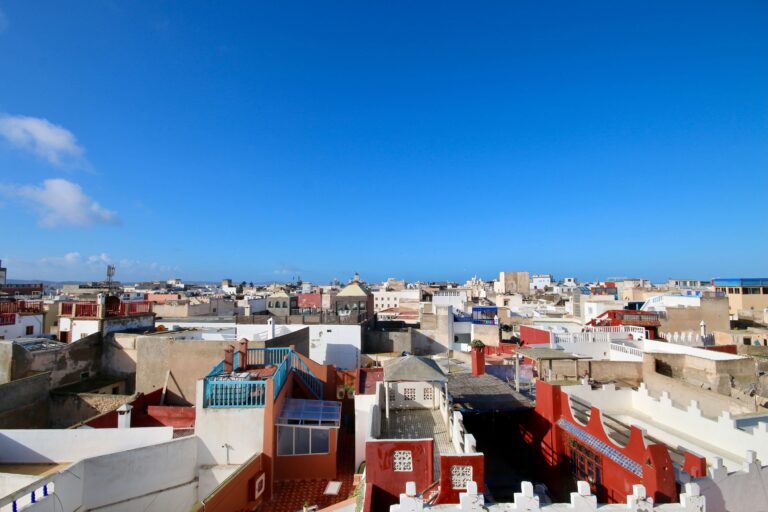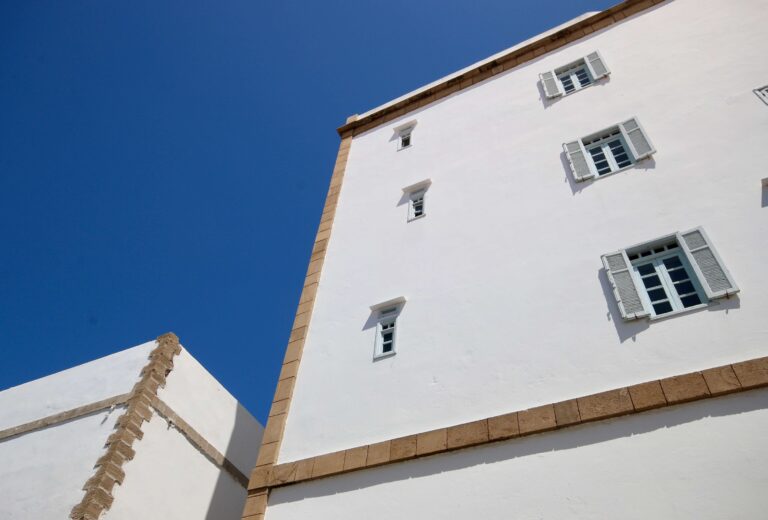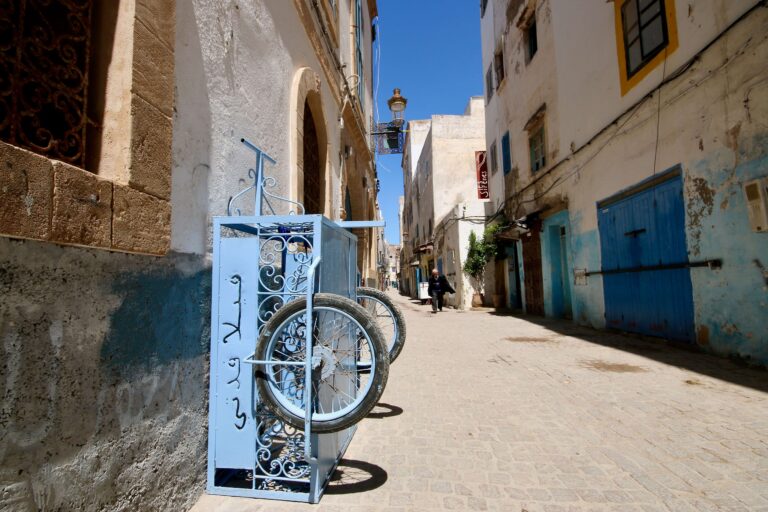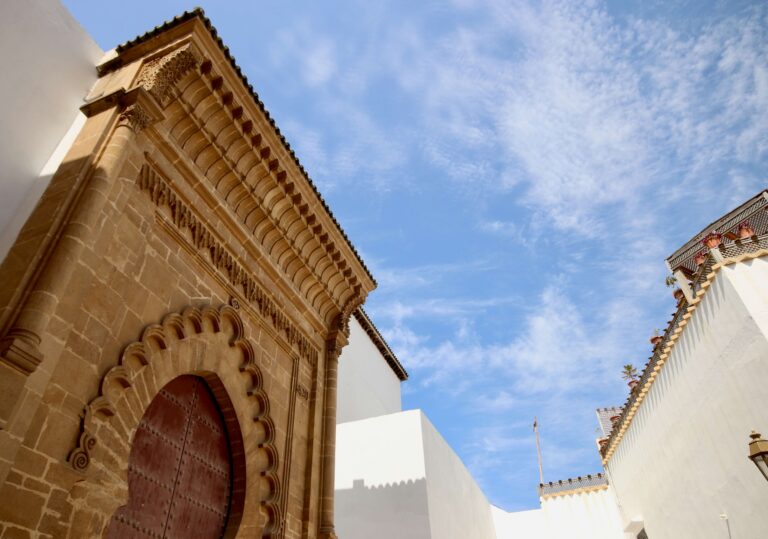Morocco’s Route of 1000 Kasbahs: A Suggested Itinerary
Want to explore the Route of 1000 Kasbahs on your next Morocco trip? Discover everything you need to know about this spectacular region and how to experience it on a self-driving adventure.
With its enchanting earthen buildings and otherworldly landscapes, the Route of 1000 Kasbahs is one of my favourite areas in Morocco. It lies in the country’s southeast, where a mosaic of ancient fortified cities, palm-studded oases and rugged desert landscapes combine.
Travelling the Route of a 1000 Kasbahs provides a wonderful opportunity to immerse yourself in historical scenes depicted on the silver screen, all while experiencing the comings and goings of modern-day village life.
I still remember the first time I visited the area. The beauty of the Drâa River Valley, the captivating light and the hospitality of the local people. It’s a part of Morocco that I’d return to in a heartbeat.
In this article, I’ll explain everything you need to know about exploring the Route of 1000 Kasbahs in Morocco, including where it is and a suggested itinerary. I’ve also included recommended places to stay along the route, several of which are kasbahs themselves.

Disclosure: This article contains affiliate links, meaning I earn a small commission when you make a purchase. Affiliate links cost you nothing and ensure my content stays free!

PLAN YOUR TRIP WITH MY FAVOURITE RESOURCES:
Find hotels via Booking
Book tours and attractions via Viator or GetYourGuide
Find a rental car via Discover Cars
Book flights via Kiwi or Booking
Search for buses and trains via 12Go or Omio
Get travel insurance via SafetyWing
Buy a digital eSIM with Airalo
By purchasing through my links, you’ll be supporting my website at no additional cost to you
If you’re renting a car for this Route of 1000 Kasbahs itinerary, I recommend you do so through Discover Cars. They have everything from compact automatics to manual vans, ensuring there’s something for all travel groups and driving styles. Plus, they offer 24/7 support and free cancellations, because plans can change!
What is a kasbah?
While the term “kasbah” can be loosely translated as “fortress”, it refers to two distinct types of architectural structures in Morocco. These can be broadly grouped based on their geographical location and cultural influences.
In the northern parts of Morocco, the kasbahs are fortified, castle-like structures. Most once served as the residences of governors and administrators. These include the Kasbah of the Oudaias in Rabat and the Alcazaba in Chefchaouen.
Both of these kasbahs held strategic importance in the governance and security of these northern cities.
Morocco’s northern kasbahs share similarities with the “alcazabas” found in Spain, reflecting their strong ties to Islamic culture and Moorish influences.
In contrast, the kasbahs of southern Morocco exhibit a markedly different character and function. Rather than serving as fortified administrative hubs, they were primarily designed as residential complexes for wealthy families and as meeting points along important trade routes.
Constructed largely from earthen materials, these kasbahs reflect stronger ties to Amazigh cultural traditions.
While the northern kasbahs were built to last as cornerstones of future cities, the southern kasbahs were strategically located but not necessarily intended for long-term expansion.
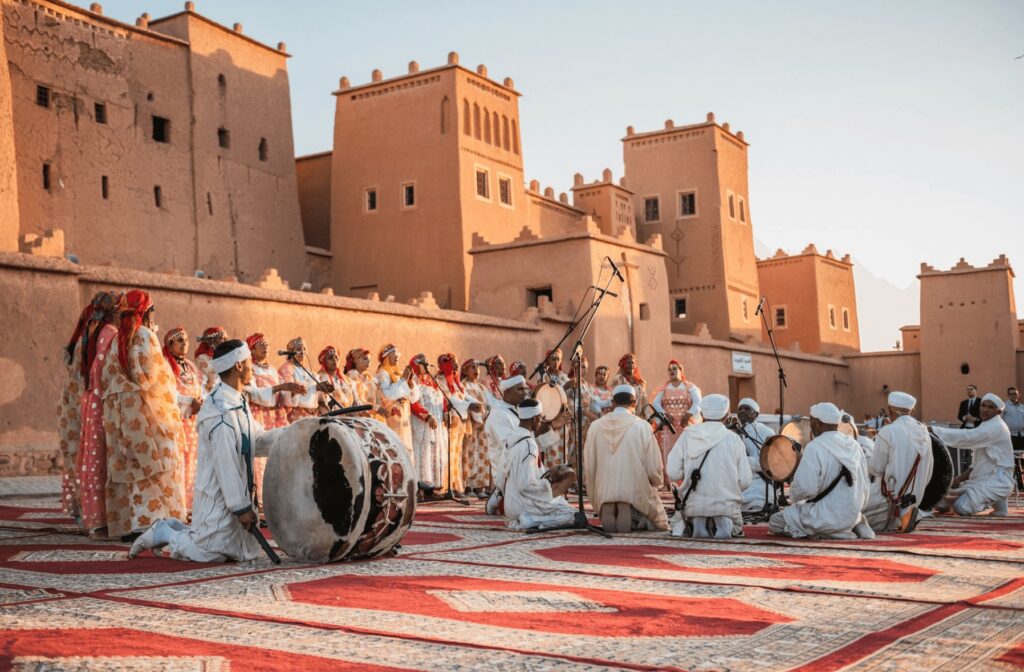
Where is the Route of 1000 Kasbahs?
Strictly speaking, the Route of 1000 Kasbahs is a 143-kilometre stretch of road that connects Ouarzazate and Goulmina. But it is more commonly used to describe a network of scenic roads that lead through landscapes dotted with ancient fortresses and traditional Amazigh villages to the east of Ouarzazate.
The area is surrounded by the High Atlas Mountains to the north and the rugged Jebel Saghro range to the south. This creates a breathtaking backdrop for road trips. Along the way, there are plenty of opportunities to admire kasbahs in various states of ruin. Some of these have been beautifully restored and UNESCO-protected.
Some historic kasbahs have even been converted into accommodation, allowing for a truly unique overnight experience.
While it still remains off the beaten tourist track, the Route of 1000 Kasbahs is rapidly gaining in popularity amongst self-driving tourists in Morocco. Compared to Marrakech, it’s an opportunity to experience a different side of the country and places where traditional life still holds strong.
Suggested itinerary for exploring the Route of 1000 Kasbahs
This Route of 1000 Kasbahs itinerary is designed to be completed in anywhere from 2 to 5 days. How long you take depends on the time you have available and the pace at which you prefer to travel.
Beneath each destination, I’ve included recommended places to stay along the Route of 1000 Kasbahs. All of these are highly atmospheric and receive rave reviews.
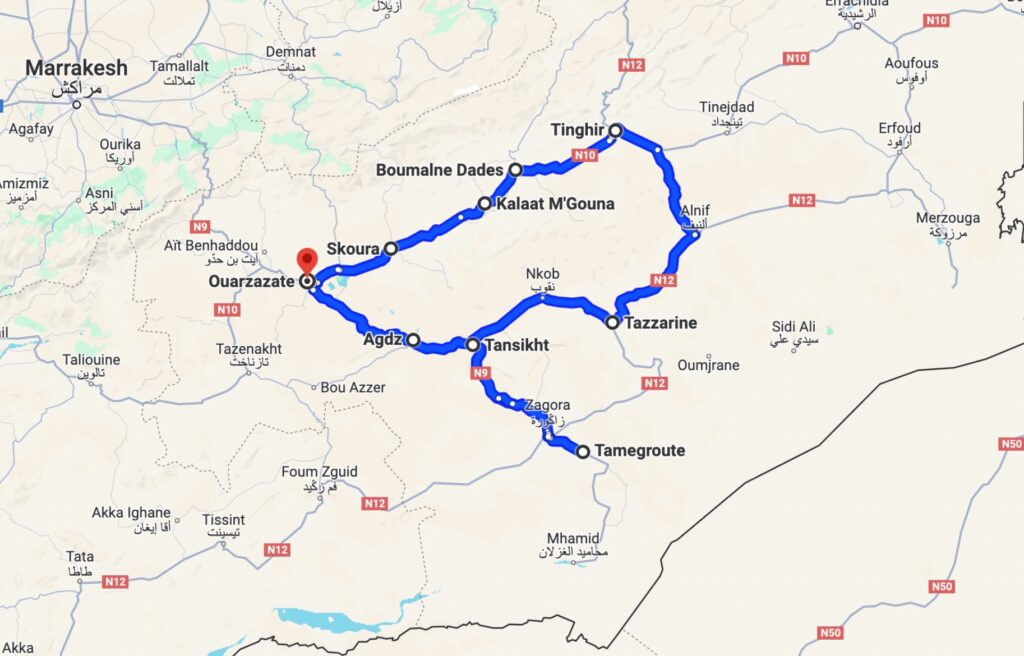
DISCLAIMER:
When driving the Route of 1000 Kasbahs independently, it’s important to be aware that not all of the kasbahs you will pass by are structurally sound. In fact, some are completely unsafe for exploration. The 6.8-magnitude earthquake that struck Morocco in 2023 caused further destabilisation and restoration works are ongoing.
Several kasbahs are officially open to visitors for a small fee. This money goes towards restoration efforts. Others are best observed from the exterior. Alternatively, you can overnight in one of the area’s many kasbah hotels. Some of these are historic restorations while others are replica builds.
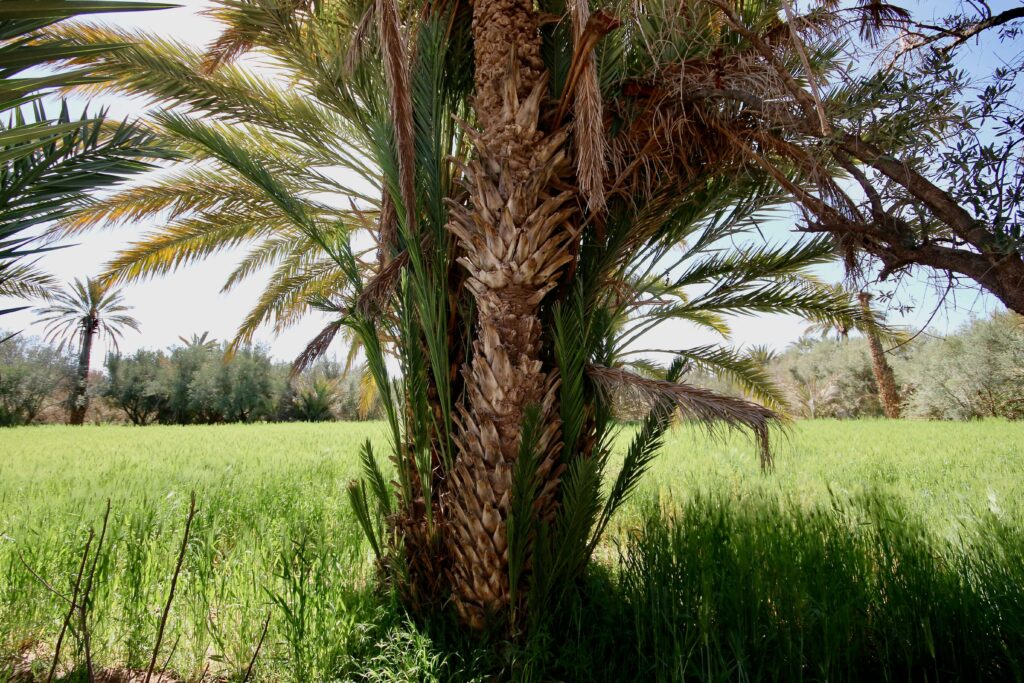
Route of 1000 Kasbahs itinerary
Begin your drive along the Route of 1000 Kasbahs in Ouarzazate, a bustling desert city and the heart of Morocco’s film industry. It’s home to the Atlas Studios, where several iconic movies have been brought to life on the silver screen. Today, Ouarzazate is affectionately known as “Ouallywood”.
Adjacent to the studios stands the magnificent Kasbah of Taourirt, one of the best-preserved historical fortresses in Morocco. This grand structure served as the residence for the powerful Glaoui family, who administered the region through a longstanding feudal system.
Restored with the help of UNESCO, the Kasbah of Taourirt is now open to visitors. It’s a wonderful place to get an up-close look at traditional rammed-earth Moroccan architecture. Entrance is around 20 DH.
It’s worth keeping in mind that some parts of the kasbah were damaged during the earthquake in 2023. Until repaired, these will remain off-limits to visitors.
To learn more about things to see and do in Ouarzazate, check out my Essential Travel Guide to Ouarzazate.
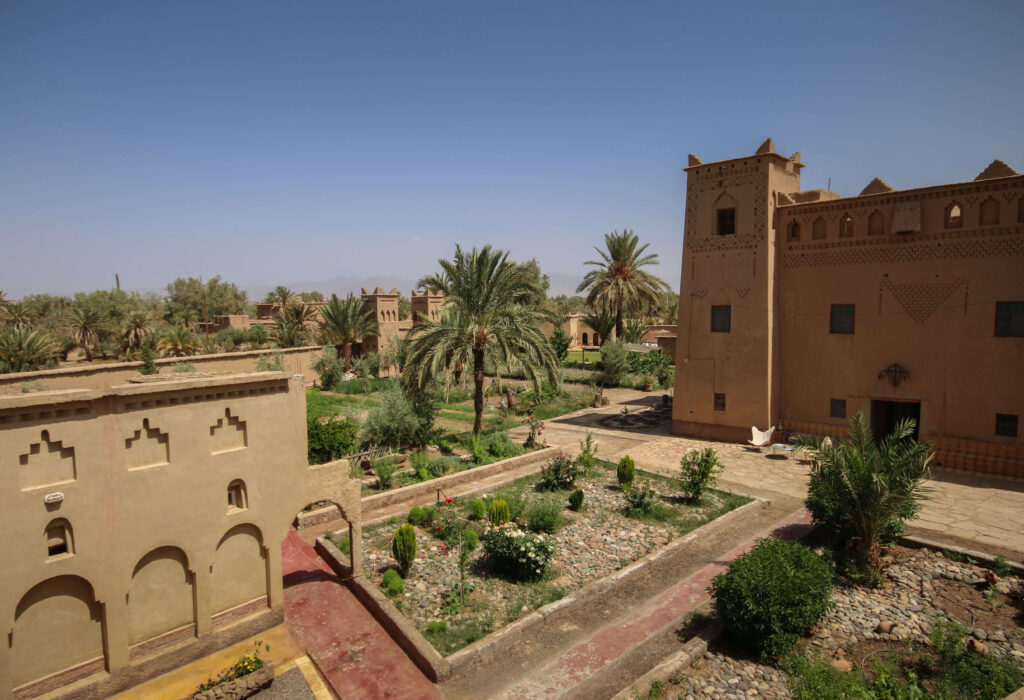
Best places to stay in Ouarzazate
OZ Palace Ouarzazate
With its palatial design, spacious suites and inviting swimming pool, this luxury Ouarzazate hotel is beautifully decorated with Moroccan tiles.
Riad Chay & Boutique
Celebrating the area’s architectural heritage, this magnificent riad features eclectically decorated rooms and a rooftop terrace.
Hôtel Riad Dar Daïf
Boasting magnificent views of the Altas Mountains, this welcoming riad lies a little outside Ouarzazate and serves authentic Moroccan cuisine at its restaurant.
You’ll find more Ouarzazate accommodation inspiration here.
From Ouarzazate, follow National Route 10 to the oasis town of Skoura. It was once an important trading post where caravans from the desert transferred their goods to mule trains headed for Fes.
Today, Skoura is renowned for its UNESCO-listed palmeraie, which provides habitat for more than 100 bird species.
Nestled within this verdant setting is the Kasbah of Amridil, a remarkably well-preserved fortress that reflect’s Morocco’s architectural heritage. It offers a glimpse into the daily lives of its former occupants, with artefacts and furnishings from centuries past on display.
To be honest, I think Skoura is one of my favourite places to stay along the Route of 1000 Kasbahs. Not only does it exude a really tranquil, off-the-beaten-track feel, but the choice of kasbah hotels and lodges here is exceptional!
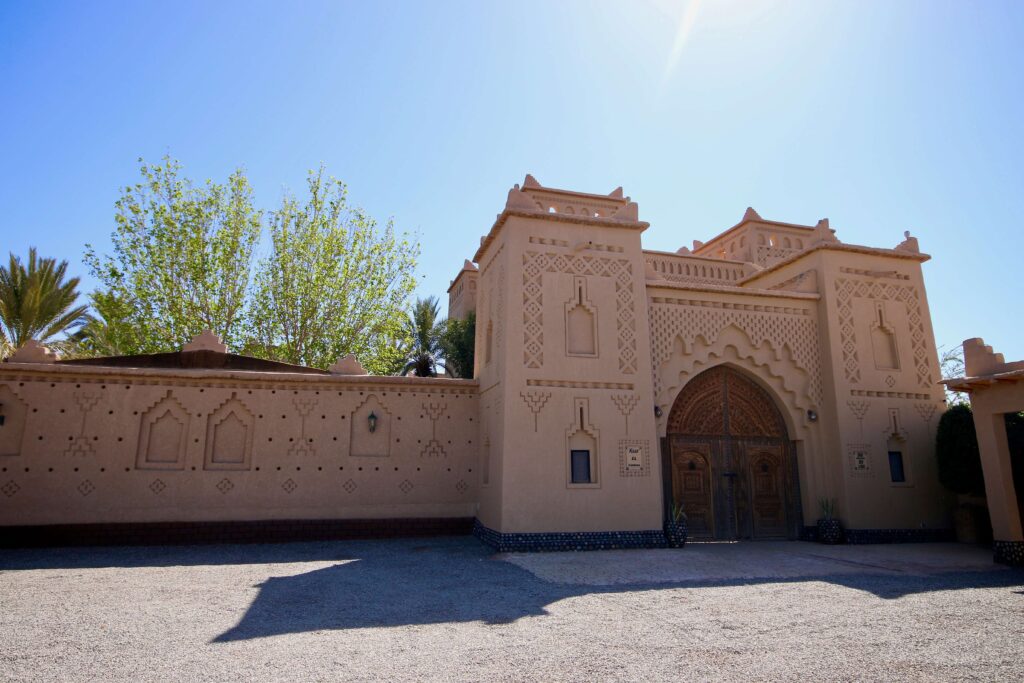
Best places to stay in Skoura
L’Ma Lodge
Set within enchanting gardens, this luxury Skoura lodge offers gourmet dining, a sparkling pool and a petanque court on the edge of the palmeraie.
Sawadi Ecolodge
This eco-friendly Skoura lodge features a saltwater swimming pool and a traditional hammam, all set within a lush oasis.
Auberge Kasbah Tiriguioute
This family-run Skoura auberge features atmospheric rooms, a fireside lounge and a sparkling swimming pool.
Eco-Ferme Tamalait Skoura
On the edge of the palmeraie, this Skoura eco-lodge is run by two brothers who offer incredible hospitality and delicious meals.
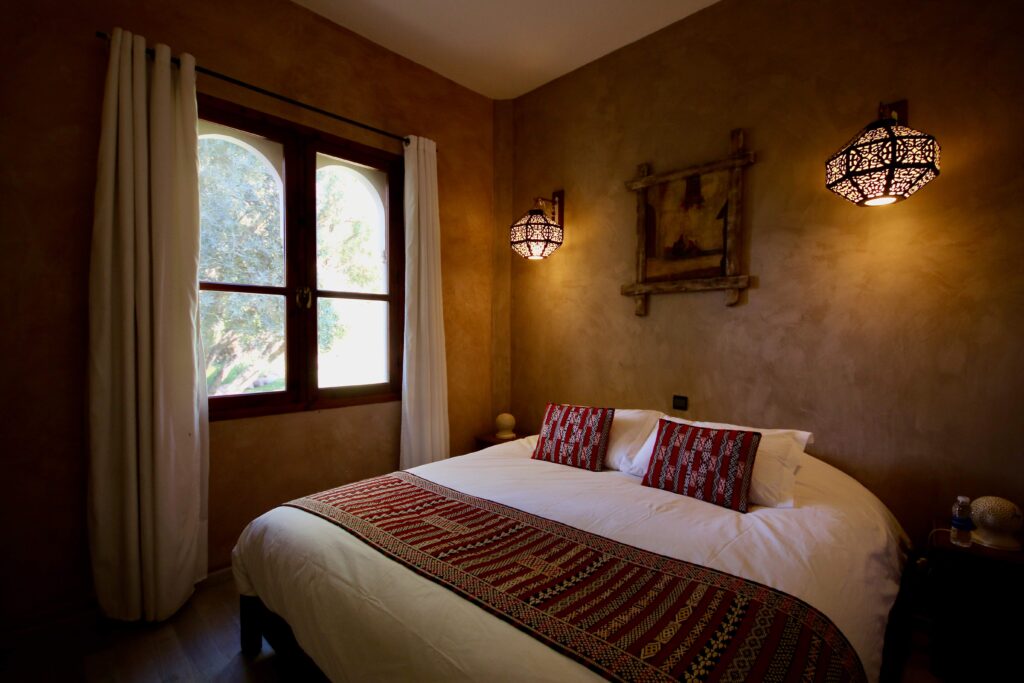
From Skoura, continue to Kalaat M’Gouna, which serves as the main town of the Valley of Roses.
For generations, rosa damascena has been grown and harvested here, coming into bloom around April/May. If you’re visiting during this period, you’ll smell the scent of roses being distilled before you see them. The Festival of Roses is not to be missed!
Outside of the spring months, it’s still worth taking a detour and driving the 30-kilometre paved road that leads north from Kalaat M’Gouna along the banks of the Assif M’Goun River. It winds past sculpted cliffs and clusters of date palms, as well as tiny villages where life continues as it has done for generations.
The Valley of Roses is also home to several traditional auberges where you can stay overnight.
Best places to stay in the Valley of the Roses
Dar Timitar
This eco-friendly hotel in the Valley of the Roses features guest rooms individually decorated rooms, many with sweeping views of the snaking river below.
Kasbah Agoulzi
This kasbah-inspired hotel features traditionally styled rooms, a fireside lounge and a furnished terrace with breathtaking mountain views.
Maison d’hôtes IZZA
This recently renovated guest house receives rave reviews for the hospitality it provides. Plus, the meals it serves at breakfast, lunch and dinner are really good.
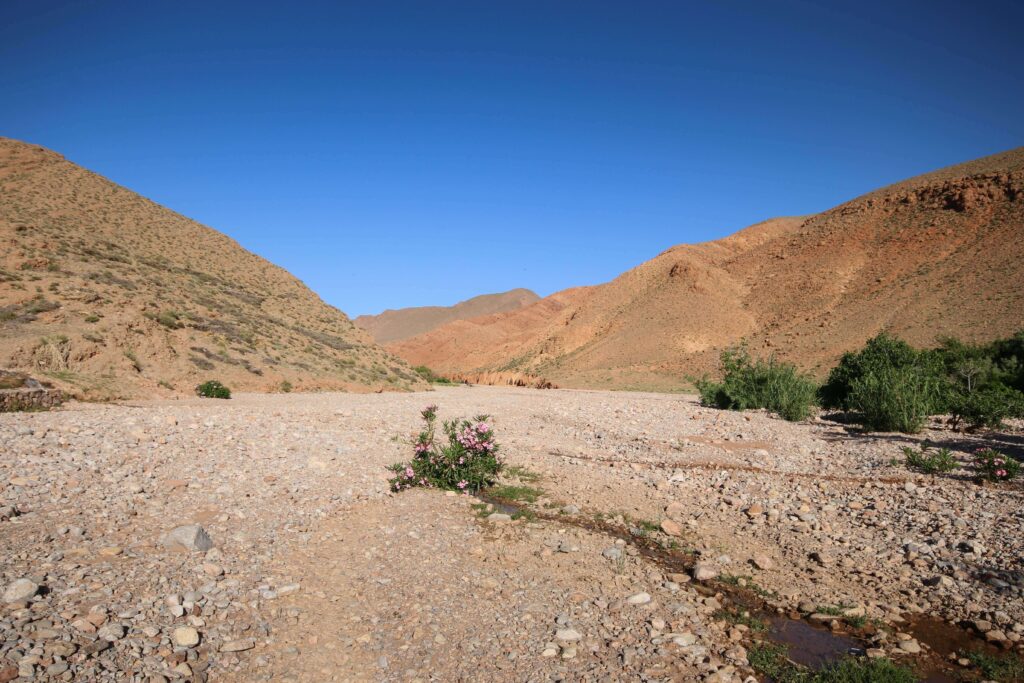
After returning to Kalaat M’Gouna, continue along the N10 to Tinghir, which serves as a gateway to Todra Gorge. Stretching 30 kilometres in length, it is flanked by towering walls that soar up to 300 metres in height. Driving here truly is a humbling experience!
Beyond the gorge itself, the surrounding landscape is dotted with ancient kasbahs. These include the Kasbah of El Glaoui, which sits perched atop a nearby hill.
While the kasbah may not be the most architecturally impressive structure, its hilltop location is. It offers a unique vantage point from which to survey the sun-baked terrain that stretches as far as the eye can see.
To learn more about things to see and do in Todra Gorge, check out my Essential Travel Guide to Todra Gorge + Dades Gorge + Skoura.
Best places to stay in Todra Gorge
Riad Lalla
This family-run riad in Todra Gorge offers wonderful mountain views. Plus, there’s a resident guide offering hikes in the surrounding area.
Palmeraie Guest House
Trails lead directly from the door of this welcoming Todra guest house. Authentic Moroccan meals are served at breakfast and dinner.
Hike and Chill Homestay
Offering budget stays in its dorms and private rooms, this Todra Gorge hostel is located within an ancient ksar, making for a truly unique stay.
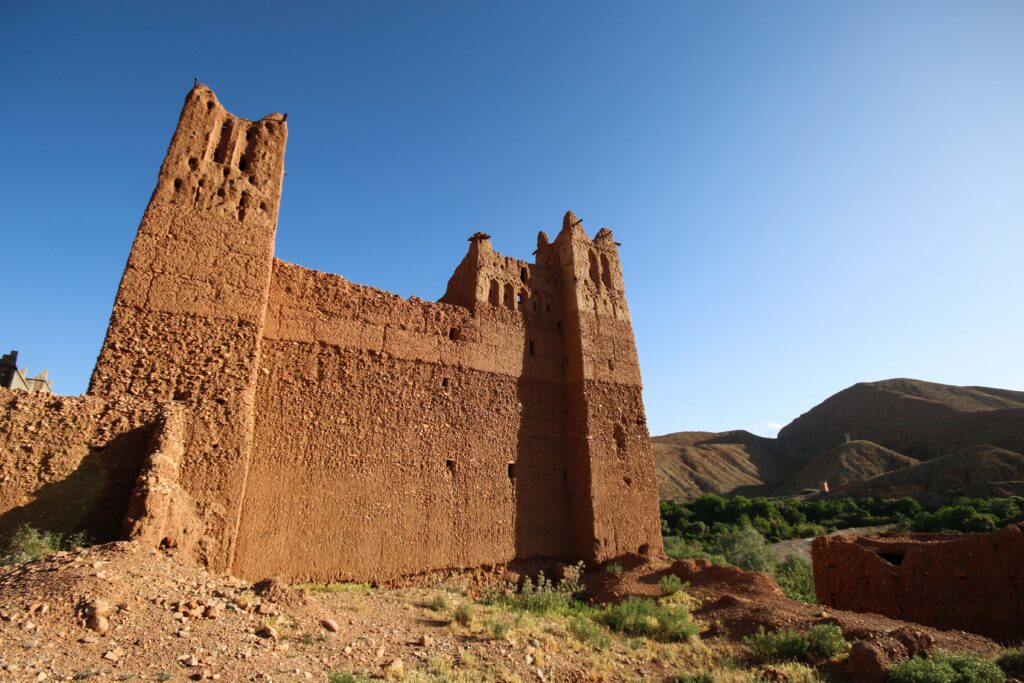
After returning to Tinghir, follow the N10 for another 10 or so kilometres. Then turn right onto the R113, which meets the larger N12 at Alnif. This leads to the first of two oasis settlements, the Tazzarine Oasis. It nestles at the base of the towering Jebel Saghro mountain range.
It’s home to a collection of ancient rock carvings and petroglyphs, offering a glimpse into the lives of those who once inhabited this desert region.
Pressing onward, you’ll reach the Nkob Oasis, a palm grove dotted with the crumbling remains of over 50 kasbahs. While the majority of these historic buildings now lie in a state of advanced deterioration, it’s still wonderful to simply wander between the date palms of this centuries-old agricultural landscape.
Top tip:
While the ruins along the Route of 1000 Kasbahs are captivating, not all are structurally solid. For your own safety, I’d highly advise against entering any kasbah that hasn’t been restored or preserved as a museum. Instead, admire and photograph them from afar.
Continuing along this route, you will eventually reach the N9, which leads back to Ouarzazate. The road passes through the town of Agdz, which lies at the base of Jebel Kissane along the banks of the Draâ River.
Before reaching Agdz, you can make a short detour to the town of Aâgoubt and the Kasbah of Oulad Othmane. This is a beautifully preserved 18th-century fortress where you can spend the night.
Each of its authentic rooms is colourfully decorated with Amazigh textiles. Plus, there’s a stunning swimming pool with views of the surrounding mountains.
Continue driving south to the village of Tamegroute, which has long been a centre of religious learning. It was the historical heart of the Nasiriyya, a Sufi order that was among the most influential in the Islamic world.
Aside from being renowned for its glazed ceramics, Tamegroute is home to a buried kasbah. It was designed for its occupants to escape the scorching summertime temperatures.
Not to miss is the Tamegroute Koranic Library, which contains a collection of ancient books dedicated to everything from religion to poetry and astrology.
While there aren’t many places to stay in Tamegroute, there are some inviting oasis lodges and riads in nearby Zagora. This desert town is famed for its mural depicting the cameleer’s journey to Timbuktu.
To learn more about visiting Zagora, check out my Essential Travel Guide to Zagora.
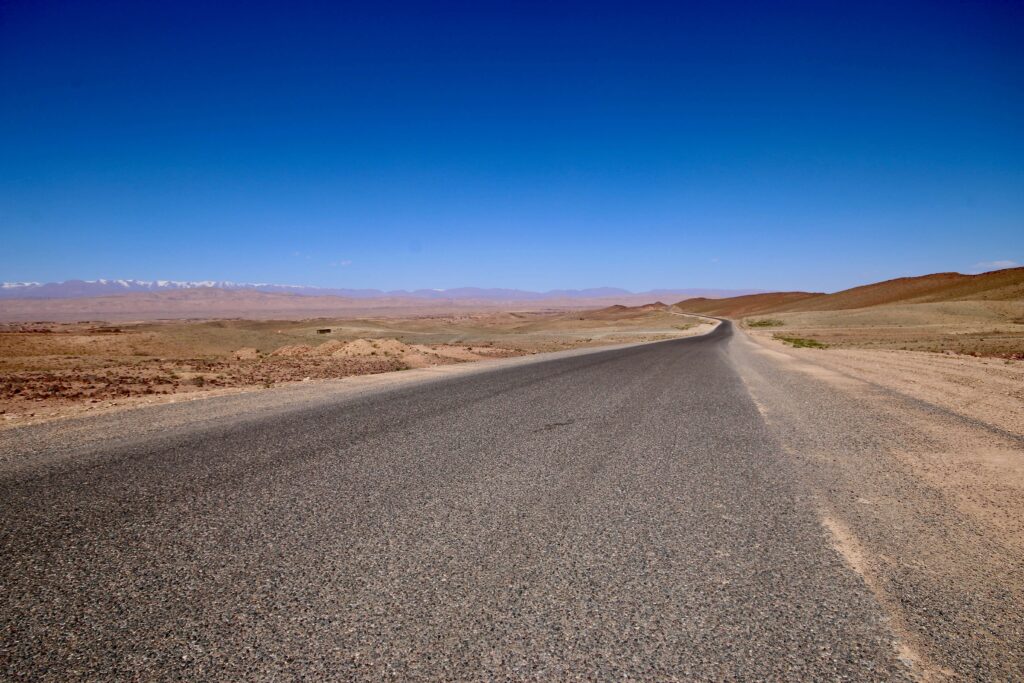
Best places to stay in Zagora
La Petite Kasbah
With its sun-drenched terrace and swimming pool, this traditional riad in Zagora receives rave reviews for its warm hospitality and delicious meals.
Oasis Tilogui
Located on the road that connects Tamegroute and Zagora is this enchanting lodge. It features beautifully decorated rooms and a large swimming pool within lush surroundings.
Riad Dar Sofian
Set in the heart of Zagora’s palm grove is this elaborately decorated riad. It features your choice of room or suite overlooking the surrounding gardens and swimming pool.
From Zagora, head towards Agdz, stopping en route in Tamnougalt. This was a former residence of caïds (local administrators) with a couple of old kasbahs to admire.
Tamnougalt translates from Tachelhit (the local Amazigh language) as “meeting point”. It’s here that the annual Moussem Ellama religious festival is held each October.
Eventually, you’ll arrive in Agdz, whose name translates as “resting place”. It was once a place for caravans to rest and exchange goods as they made the journey across the Sahara from Marrakech to Timbuktu. Today, Agdz is still a place where goods are exchange, most notably at the lively Thursday market.
From Agdz, it’s around an hour’s drive back to Ouarzazate, ending your adventure on the Route of 1000 Kasbahs.
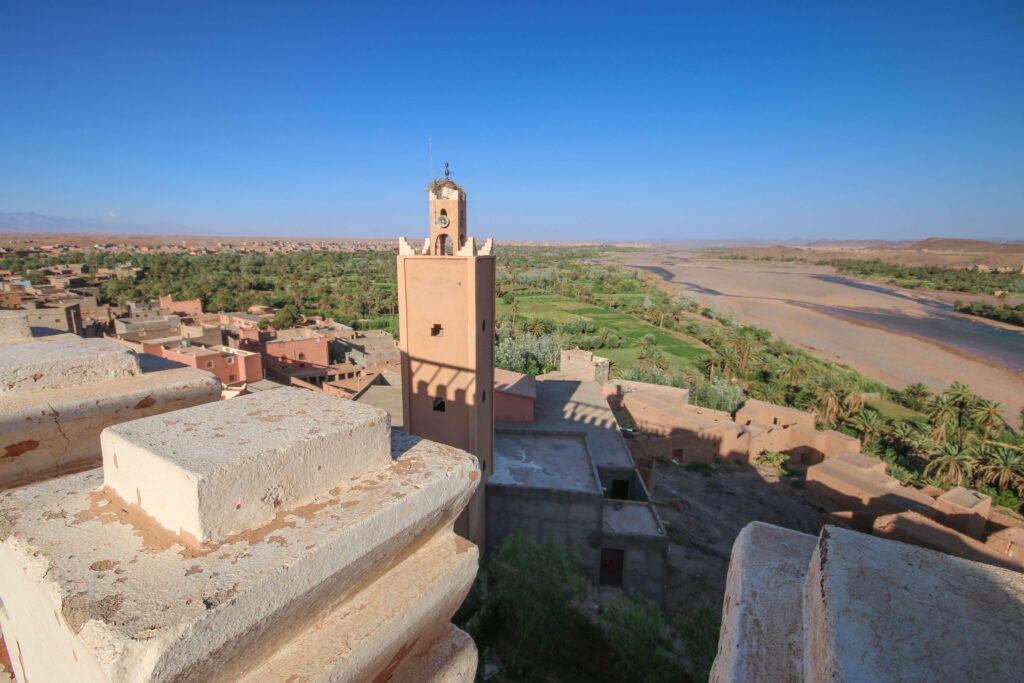
Best places to stay in Agdz
Kasbah Maktob Tamnougalt
Lovingly renovated and decorated with Amazigh rugs, this authentic kasbah is run by the wonderful Mustafa and his family.
Dar Jnane
Featuring air-conditioned rooms and private terraces, this affordable hotel in Agdz includes delicious breakfasts in all of its stays.
Rose du Sable
On the northern edge of Agdz, this beautiful hotel offers spacious rooms and an inviting swimming pool.
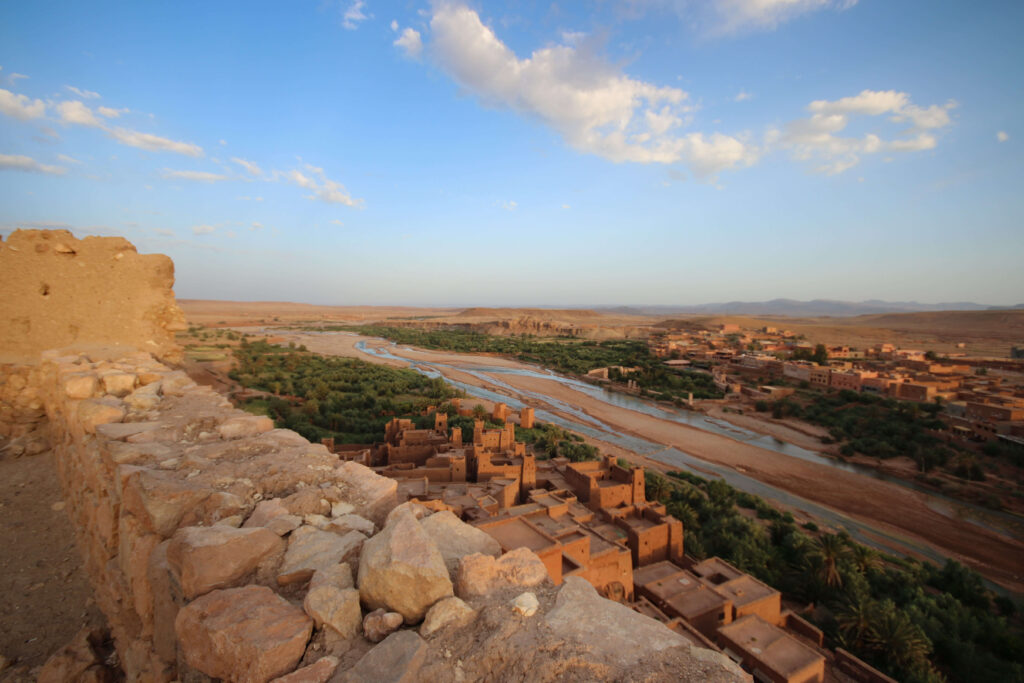
Optional add-on to Aït Benhaddou
If time allows, follow the scenic road that leads 30 kilometres northwest from Ouarzazate to the ancient ksar of Aït Benhaddou. This UNESCO World Heritage Site, inscribed in 1987, sits perched atop a hill overlooking the gently flowing Ounila River.
Aït Benhaddou’s adobe buildings seamlessly blend into the surrounding landscape of palm groves, orchards and neatly tended agricultural plots. It’s no wonder it has become a renowned filming location, serving as the cinematic backdrop for “Lawrence of Arabia,” “Gladiator” and “Babel”.
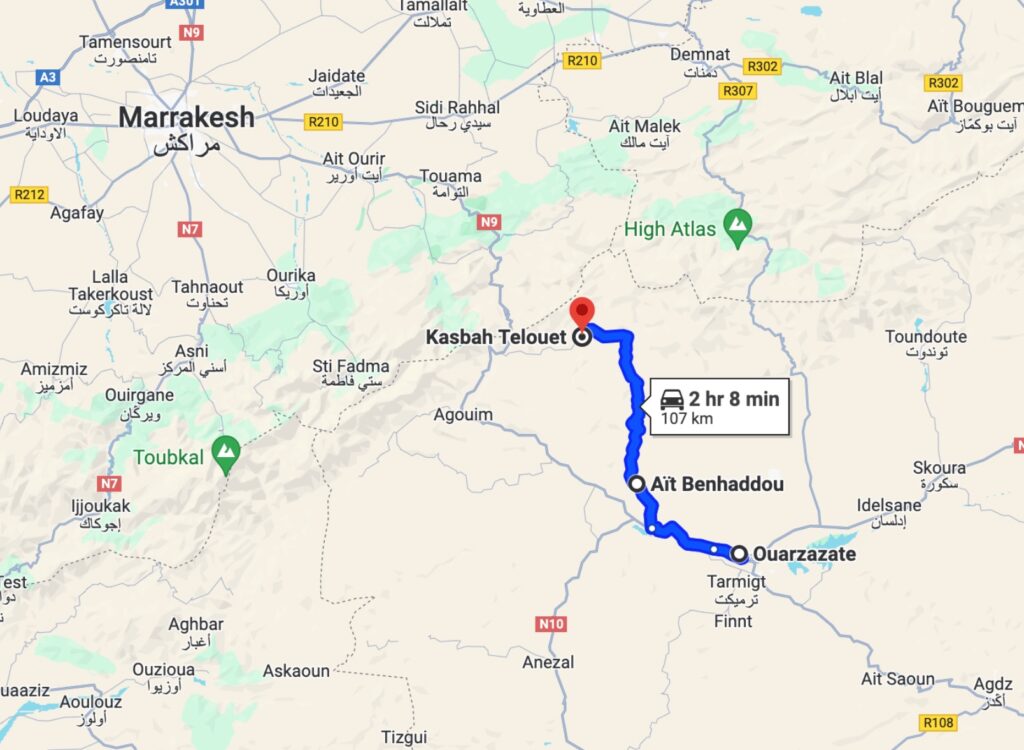
If you continue north from Aït Benhaddou for another 20 kilometres you’ll reach Kasbah Telouet. This centuries-old structure was once the seat of the Glaoui family. It has been compared by some to Granada’s Alhambra, with beautiful mosaics throughout its interior.
Unfortunately, Kasbah Telouet was partially damaged during the 2023 earthquake. Restoration works are ongoing and so some parts may be off-limits to visitors. Entrance is around 20 DH.
To learn more about things to see and do in Aït Benhaddou, check out my Essential Travel Guide to Aït Benhaddou.
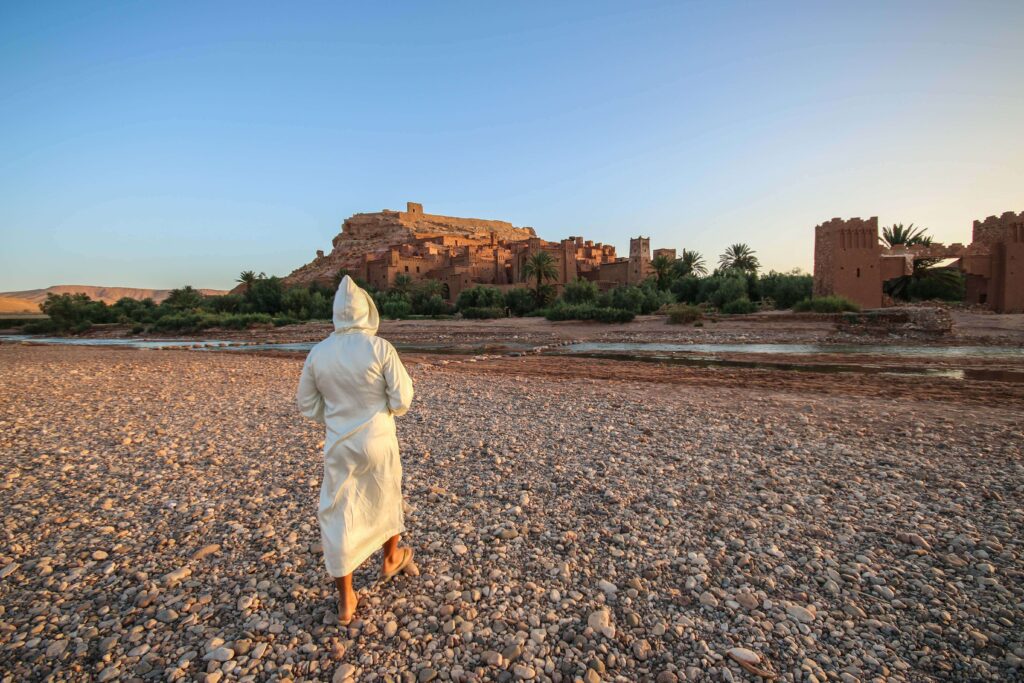
Best places to stay in Ait Benhaddou
Dar Mouna La Source
Just a stone’s throw from the ksar, this Ait Benhaddou hotel offers comfortable rooms and a swimming pool where you can refresh during the heat of the day.
Riad Caravane
Inspired by an ancient kasbah, this enchanting riad offers a range of suites, plus a swimming pool, a rooftop terrace and a restaurant serving regional specialties.
Tigmi Hamid
While located a little outside Aït Benhaddou, this family-run guest house has been beautifully decorated with Amazigh textiles and receives rave reviews for its tagines.
FAQs about the Route of a Thousand Kasbahs
What is the Route of a Thousand Kasbahs in Morocco?
The Route of a Thousand Kasbahs is a scenic and historic route through the Drâa Valley in southern Morocco. It refers to a network of roads that wind through a spectacular desert landscape dotted with hundreds of ancient kasbahs (fortified houses made from rammed earth).
Many of these impressive structures date back to the 17th century when they served as residences for the wealthy. Some also functioned as storehouses and protective fortresses for local villagers.
Travelling the Route of a Thousand Kasbahs offers a fascinating glimpse into Morocco’s cultural heritage and traditional earthen architecture. It takes in desert oases, palmeraies and traditional Amazigh villages along its way.
How many kasbahs are there in Morocco?
Morocco is renowned for its historic kasbahs, ancient earthen fortresses that dot the rugged landscapes of the country’s southeast. While an exact count is difficult to determine, it’s estimated that there are hundreds of kasbahs scattered throughout the country.
Many of these impressive structures date back centuries to a time when they served as residences and strongholds for local rulers. The most famous include Taourirt Kasbah, a sprawling complex in Ouarzazate that was once home to the el Glaoui clan, and Telouet Kasbah near Ait Benhaddou.
Many of these ancient fortifications have been carefully restored and now serve as living museums, offering a fascinating window into Morocco’s cultural and architectural heritage.
What does kasbah mean in Morocco?
A kasbah is a fortified residence or citadel typically found in North Africa, especially in countries such as Morocco. These remarkable structures are often perched on hills and feature thick walls and towers built to safeguard the residents from invaders.
In northern Morocco, the kasbahs are castle-like edifices that historically served as residences for governors and officials. Noteworthy examples include the Kasbah of the Oudaias in Rabat and the Alcazaba in Chefchaouen, both vital for the control and security of these cities.
In contrast, the kasbahs in southern Morocco were primarily constructed as residences for wealthy families and gathering places along important trade routes. Primarily made from earthen materials, these kasbahs reflect a stronger connection to Amazigh cultural heritage.
When is the best time to drive the Route of 1000 Kasbahs?
Due to the extreme heat experienced in summer and the chilly desert nights in winter, the best time to drive the Route of 1000 Kasbahs in Morocco is during the spring or autumn months.
From March to May and September to November, temperatures are mild and pleasant, making for comfortable driving conditions to explore this historic route. The landscape is also at its most vibrant during springtime when the valleys and oases are lush and green with fresh vegetation.
Driving the route during this time also allows you to see the apricot and almond trees in full blossom, decorating the valleys in delicate pinks and whites.
It’s best to avoid driving the Route of 1000 Kasbahs during the peak summer months (June to August), as temperatures can soar to uncomfortable levels. If you do visit during this period, be sure to book a kasbah hotel with a swimming pool!
Winter can bring snow and icy conditions to the high mountain passes. For example, you may need to wait for snow to be cleared when driving the Tizi-n-Tichka Pass from Marrakech to Ouarzazate. Winter nights in Morocco’s desert regions can get incredibly chilly, so be sure to pack warm layers.
Renting a car for a Route of 1000 Kasbahs itinerary
If you’re renting a car for this Route of 1000 Kasbahs itinerary, I recommend you do so through Discover Cars. They have everything from compact automatics to manual vans, ensuring there’s something for all travel groups and driving styles. Plus, they offer 24/7 support and free cancellations, because plans can change!

PLAN YOUR TRIP WITH MY FAVOURITE RESOURCES:
Find hotels via Booking
Book tours and attractions via Viator or GetYourGuide
Find a rental car via Discover Cars
Book flights via Kiwi or Booking
Search for buses and trains via 12Go or Omio
Get travel insurance via SafetyWing
Buy a digital eSIM with Airalo
By purchasing through my links, you’ll be supporting my website at no additional cost to you
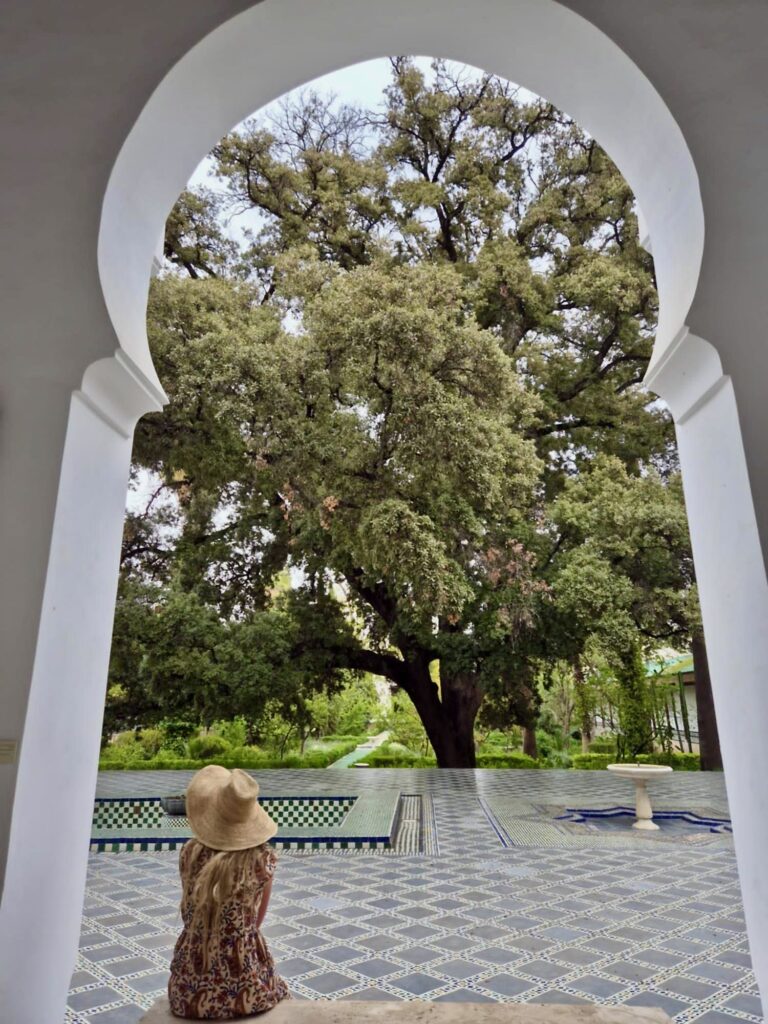
About Me
I’m Malika, a global traveller who first visited Morocco in 2014 before marrying a local and settling down in a little village on the Atlantic coast. Over the years, I’ve developed an intense love for Morocco, its incredible landscapes, storied cities and the exceptionally generous hospitality of its people.
Malika in Morocco is a place to share my years of experience exploring the country, from north to south and from the Atlantic Ocean to the Sahara Desert. As a resource for travellers visiting Morocco, I want to encourage others to experience this captivating destination the way they desire, whether that’s independently or under the expert guidance of local tour operators.
I believe strongly in supporting responsible and sustainable tourism initiatives while inspiring travel experiences that are life-impacting and mutually beneficial for both travellers and locals.
-
One Week Morocco Itinerary: Marrakech + Sahara + Taghazout
Want a taste of Morocco’s souks, surf and the Sahara? This one week Morocco itinerary from Marrakech to Taghazout explores the best the sun-drenched south has to offer! If you only have a week to spare and want to cover A LOT of ground, then this 7-day Morocco itinerary from Marrakech to Taghazout is for…
-
Atlas to Atlantic: One Week Morocco Itinerary for Outdoor Lovers
Experience the diversity of Morocco on this one-week Morocco itinerary from Marrakech to Essaouira, taking you into the High Atlas Mountains and back down to the Atlantic Ocean. It allows you to experience the energised buzz of the “Red City” and hike through the ruggedly beautiful Atlas Mountains. Then, immerse yourself in the country’s artistic…
-
Imperial Cities: One Week Morocco Itinerary from Fes to Marrakech
Immerse yourself in Morocco’s cultural heritage on this one-week Morocco itinerary from Fes to Marrakech, which takes in four fascinating imperial cities. It’s ideal for history buffs wanting to learn more about the country’s storied past and witness some of its most impressive architectural landmarks. As you journey through the Imperial Cities, you won’t just…
-
Kasbahs and Canyons: 5 Day Morocco Itinerary from Marrakech
Discover some of Morocco’s most majestic scenery and ancient wonders on this 5-day Morocco itinerary from Marrakech. Explore storied ksars and kasbahs where history permeates every stone and witness oases blossoming from the desert. Inhale the sweet perfume of rose oil in the Valley of Roses and trek through the fiery red rock canyon of…
-
Best of the North: One Week Morocco Itinerary
Discover some of the most enchanting towns and cities in Morocco’s north on this one week Morocco itinerary from Tangier to Fes. It takes in ancient architectural landmarks, artsy coastal medinas and rugged mountain scenery, as well as one of the country’s most Instagrammable destinations. Despite living in southern Morocco, I always love venturing to…
-
Atlantic to Sahara: Two Week Morocco Itinerary from Essaouira
Experience Morocco’s stunning landscapes and fascinating cultures away from the crowds on this two week Morocco itinerary from Essaouira, taking in ancient ports and the vast beauty of the Sahara Desert. Feast your eyes on Essaouira’s whitewashed medina and journey into Toubkal National Park, where forests cloak the slopes of the towering High Atlas. Descend…

